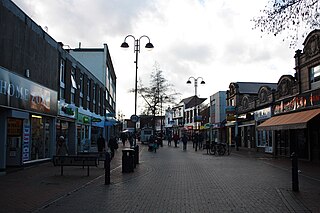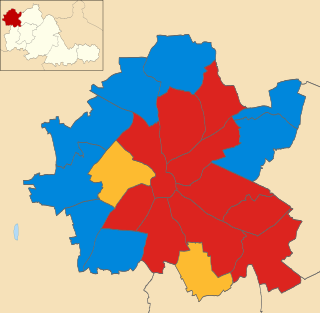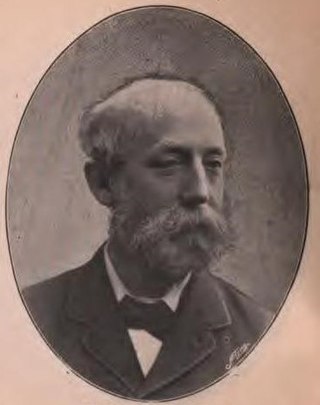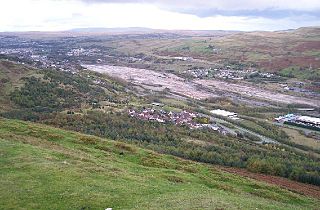
The Black Country is an area of England's West Midlands. It is mainly urban, covering most of the Dudley and Sandwell metropolitan boroughs, with the Metropolitan Borough of Walsall and the City of Wolverhampton sometimes included. The towns of Dudley and Tipton are generally considered to be the centre.

Bilston is a market town in the City of Wolverhampton in the West Midlands, England. It is close to the borders of Sandwell and Walsall. The nearest towns are Darlaston, Wednesbury, and Willenhall. Historically in Staffordshire, four wards of Wolverhampton City Council now cover the town. These are Bilston South and Bilston North, which almost entirely comprise parts of the historic Borough of Bilston and Ettingshall North and Ettingshall South and Spring Vale, which comprise a part of Bilston and other parts of Wolverhampton. The town had a population 34,639 at the 2021 Census.

Coseley is a village in the Dudley district, in the county of the West Midlands, England. It is situated three miles north of Dudley itself, on the border with Wolverhampton and Sandwell. It falls within the Tipton and Wednesbury parliamentary constituency.

Blakenhall is a suburb and ward in Wolverhampton, England. The population was 12,614 at the 2021 census.
Lanesfield is a district now within the boundaries of Wolverhampton, specifically in the city council's Spring Vale ward. Lanesfield lies within the Ancient Manor of Sedgley and was a rural village for many years until the growth of the Black Country's industries. Lanesfield's name originates from the Lane family who lived where the area now stands. Originally, Lanesfield was known as Lane's Field.

Wolverhampton South East is a constituency in West Midlands that was created in 1974. The seat has been represented in the House of Commons of the Parliament of the United Kingdom by Pat McFadden of the Labour Party since 2005. McFadden currently serves as Chancellor of the Duchy of Lancaster under the government of Keir Starmer.
Bilston East was a ward of Wolverhampton City Council, West Midlands. It covered Bilston town centre and the southern and eastern parts of the town of Bilston, as well as Bradley. It bordered the Spring Vale, Ettingshall, and Bilston North wards, as well as the Metropolitan Boroughs of Walsall, Sandwell, and Dudley. It formed part of the Wolverhampton South East constituency.
Bilston North is a ward of City of Wolverhampton Council, West Midlands. As its name suggests, it covers the northern parts of the town of Bilston, such as Bunkers Hill, Portobello. It borders the Bilston South, Ettingshall North and East Park wards, and the Metropolitan Borough of Walsall. It forms part of the Wolverhampton South East constituency.

Ettingshall is an area of Wolverhampton, West Midlands, England. It lies within two wards of Wolverhampton City Council: Ettingshall North and Ettingshall South and Spring Vale. The population of Ettingshall taken at the 2011 census was 13,482.

Elections to Wolverhampton City Council were held on 3 May 2007 in Wolverhampton, England. One third of the council was up for election and the Labour Party kept overall control of the council.

Sir Alfred Hickman, 1st Baronet was a British industrialist and Conservative party politician who was a Member of Parliament (MP) between 1885 and 1906.
The 1986 Council elections held in Wolverhampton on Thursday 1 May 1986 were one third, and 20 of the 60 seats were up for election.
The 1987 Council elections held in Wolverhampton on Thursday 7 May 1987 were one third, and 20 of the 60 seats were up for election.
East Park is the name of a ward of Wolverhampton City Council, West Midlands, England. It lies to the east of Wolverhampton city centre, stretching to the city's boundary with the Metropolitan Borough of Walsall. It also borders the wards of Bilston North, Ettingshall, St Peter's, Heath Town and Wednesfield South. It forms part of the Wolverhampton South East constituency.

Ebbw Vale Steelworks was an integrated steel mill located in Ebbw Vale, South Wales. Developed from 1790, by the late 1930s it had become the largest steel mill in Europe. It was nationalised after World War II. As the steel industry changed to bulk handling, iron and steel making was ceased in the 1970s, and the site was redeveloped as a specialised tinplate works. It was closed by Corus in 2002, but is being redeveloped in a joint partnership between Blaenau Gwent Council and the Welsh Government.
Robert Erskine FRSS is an English sculptor. He has created many public sculptures by commission, which stand in locations in Britain and Europe.
Ettingshall South and Spring Vale is a ward of Wolverhampton City Council, West Midlands.









